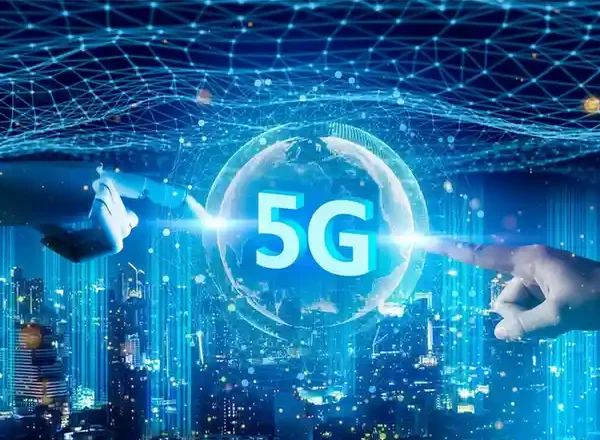I have worked as an industry analyst for several decades, following the development of pay TV, internet, wireless, telecom, and more. A new change is emerging now. 5G wireless and artificial intelligence, both components of the larger telecom ecosystem, are now combining to form intelligent, self-optimizing networks that are changing sectors like health care and telecommunications.
Every sector has always seen change as a result of innovation, but as technologies like artificial intelligence become more prevalent, the rate of change is quickening. Similar to how 5G and wireless networks have already changed the way we live and work, various types of AI are becoming more and more prevalent. These factors are now starting to come together, and the result will be significant.
As we enter a new age of rapid change, it is crucial to comprehend how AI and 5G are combining and what this implies for consumers, employees, investors, and executives.
For a longer-term, historical view of the forces rewriting our world, let’s take a step back and see why businesses need to adapt swiftly.
5G, Wireless, Telecom, and AI Are Combining

Industries are already changing as a result of the convergence of AI, 5G, wireless, and telecom, but what does this imply, and what changes are currently taking place and will occur in the future?
Although various types of AI have been around for decades, the last two years have seen a tremendous advancement in the field thanks to the introduction of OpenAI’s ChatGPT and other generative AI technologies.
It’s critical to realize that AI is not a singular technology. It is a general phrase that encompasses a variety of classifications and uses. A lot of the uncertainty starts here.
Consider AI to be a high-level slogan. It is subdivided into many categories, including the still-theoretical General AI (wide human-like intelligence), the future idea of Super AI (intelligence beyond human capabilities), and Narrow AI (task-specific intelligence). Applications like ChatGPT and other types of generative AI fall under the category of narrow artificial intelligence (AI), and they are quickly changing the corporate and consumer landscapes.
Read Also : Meta Llama 2025: The Tsunami of Open-Source AI
The Increasing Effect of AI in Connectivity Sectors
Artificial intelligence is a wide word that encompasses a variety of technologies, each of which has a unique impact on various businesses and sectors.
Given how quickly AI is developing and changing the regulations in every industry it affects, it is imperative to comprehend these distinctions.
Some businesses are integrating AI swiftly. A first-to-market advantage is granted to these pioneers. Others are adopting a wait-and-see strategy, establishing themselves as quick followers who will take action as soon as it is evident where the industry is headed. Although they both have the potential to be effective, leading and quick following are two rather distinct ways to advance.
Similar dynamics have already been observed in the wireless sector. For instance, AT&T frequently introduces new technology early, sometimes successfully and other times not. Verizon is a good example of a quick follower, moving in once the route is clearer.
AI Is Creating New Prospects for Growth
Businesses now have a fresh chance to stop a downturn and spur development thanks to artificial intelligence.
Broadband, telecom, and wireless network operations are already being revolutionized by AI. In the past, service interruptions led to a rush to identify, isolate, and resolve the issue before clients were aware of it. AI is now able to intelligently redirect traffic, identify any problems early, and maintain networks operating smoothly—often without any discernible interruption.
This change represents a competitive advantage rather than just a technical improvement. Businesses may increase customer happiness, provide better service, and set themselves up for future development by incorporating AI into their operations.
Even if the AI revolution is just getting started, the businesses who act first will have a greater chance of influencing the subsequent stage of industry change.
Read Also : Review of the Galaxy Book 5 Pro: A stylish ultrabook designed for efficiency
Emerging Leaders in the Race for AI and 5G

There is already a fierce competition to be at the forefront of the upcoming AI and 5G innovations.
Big telecom companies like Comcast, Verizon, T-Mobile, and AT&T are vying for customers’ attention by incorporating 5G and AI into their networks. In order to facilitate these changes, infrastructure companies such as Cisco, Nokia, Ericsson, and Qualcomm are constructing the technological foundation. In the meanwhile, manufacturers of gadgets like Apple, Google, Samsung, and Netgear are incorporating AI into their goods in an effort to increase user uptake.
We may anticipate a variety of tactics as the environment changes. To improve their positions, some businesses may explore mergers and acquisitions or alliances, while others will continue to operate independently.
But the biggest businesses won’t be the only ones in the AI future to hold leadership positions.
With AI-driven innovation, even smaller firms are figuring out how to take the lead by acting swiftly. RedChip, for example, just unveiled RedChat, an AI-powered investing tool that assists investors in assessing and choosing small-cap companies. This is a novel illustration of how AI is creating new avenues for growth outside of telecom and wireless.
Success in this quickly changing world won’t be determined only by size. Agility, inventiveness, and strategic execution will characterize the victors of the future generation.
Read Also : India’s newest and most popular gadgets for 2025

[…] Read Also : The Future of Telecom is Being Shaped by the AI–5G Convergence […]